For some it seems like magic, for others something incomprehensible, for others a nursery rhyme to be repeated until exhaustion. Read the tires for some it is a nightmare, for others a fun game, but for everyone it is to say the least it is essential to be aware of what you have "at your feet" while traveling. You have always wondered how to "read" tires? Today ad Auto For Dummies let's find out just that. Ready to tighten the bolts?
What does it mean to "read" tires?
Let's start immediately by trying to understand what “reading” tires mean. As we have often told here at Tech Princess, the tires all look the same from the outside, but in reality each type, model and diameter has its own history and peculiarities.
But when we talk about reading what a tire means to the viewer we are not talking about the tread, the compound or complex things. Of course, each tire on the shoulder, i.e. the side part, also indicated the model name, such as Michelin Pilot Sport 4, Continental ContiEco Contact or Bridgestone Blizzak for example. However, these names are only useful for understanding the peculiarities of a single model, as well as commercial names chosen ad hoc by each manufacturer.
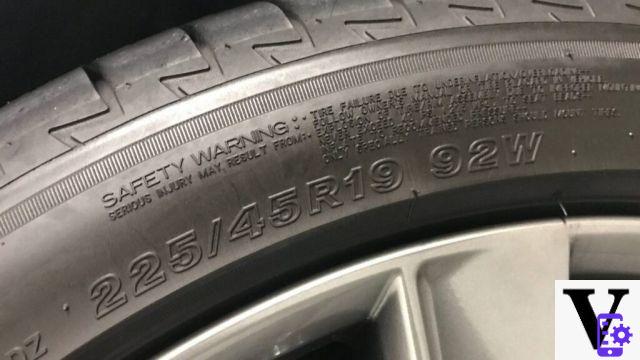
On the shoulder, however, there are acronyms, numbers and fundamental codes to "understand" a tire. Its width, shoulder height, production date and rim diameter they are all present in plain sight by law on every tire. Because? The reason is very simple: the car manufacturers study a certain number of tire “measurements” for each car model in terms of width, shoulder height, speed index and so on. To understand if a tire is suitable for your car, therefore, it is very easy to read the indications it gives on the shoulder, also to understand what to expect from a car before trying it. But no more chatter, and we immediately understand what all these numbers and letters mean.
Read the tires: tread width and shoulder height
Let's start with a series of standard abbreviations and figures to be analyzed. So let's analyze the tread pattern of the tires mounted on my car, which we will analyze carefully today.
195 / 55 R16 81V
We are not interested in the brand or the tread pattern: today we are learning “only” to understand how to identify the tires on different cars. Let's start immediately with the first wording, 195/55.
Obviously, it is not required to do the division of 195 by 55: who would want you to do a division on the side of the road? These two numbers indicate the most important indicators of a tire: the tread width and the shoulder height. The first number, 195, is in fact the indication of tread width, that is the part that is in contact with the asphalt, expressed in Millimeters. In this case, therefore, 195 indicates a tread of 195 mm, or 19,5 cm. Size 195 is one of the most popular among small and medium cars, a good compromise between road holding, noise and consumption.
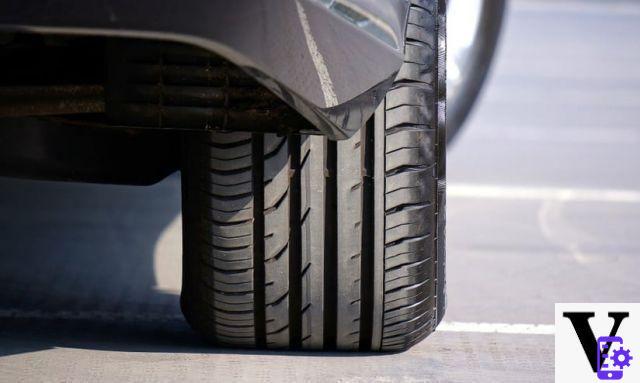
In fact, many factors depend on the width of the tread. The wider the tread, the greater the grip of the car when cornering, since there are more centimeters of rubber in contact with the asphalt, capable of discharging the power to the ground and keeping the car on the road. This is why sports cars and cars with hundreds of HP come to have tires of 275, 305 and even 325: more flat tires, more grip, more cornering speed and more horsepower unloaded on the asphalt.
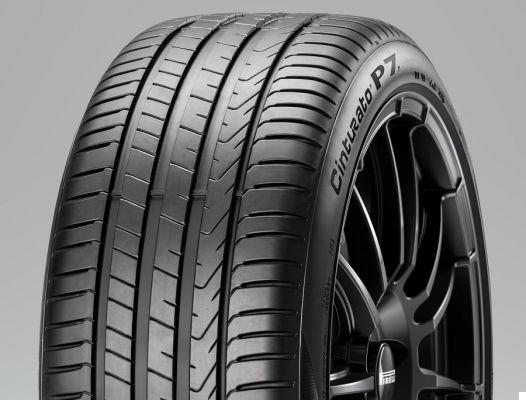
On the other hand, a wide tread not only brings advantages. With so many centimeters in width, in fact, increases the turning radius for the same number of cars, agility decreases in tight spaces or in fast maneuvers e the noise also increases, as there is physically more rubber in contact with the asphalt. A wide tire then gives more rolling resistance, increasing consumption. Furthermore, the wider a tire is, the more beautiful and sporty it is, but the risk of aquaplaning in rainy weather also increases. They are therefore more beautiful and make the car more stable and faster, but overdoing it is never a good idea. Because of this, the car manufacturers give measures that guarantee perfect balance between grip, grip, consumption, aesthetics, noise and safety.
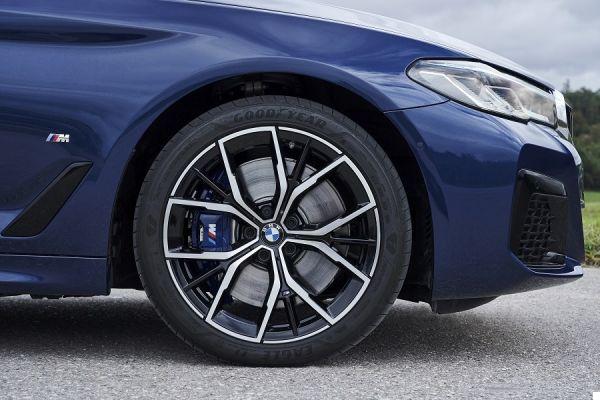
The other dimension that appears in this report is / 55. The "bar" is very important, and in fact in the jargon it is often reported: “… the car is equipped with 55 ″ bar tires. What does it mean? As we have mentioned, together with the width of the tread, the height of the tread is also indicated shoulder. The shoulder is the lateral “wall” of the gum, as also indicated by the equivalent English word "sidewall". This part is not only important because it houses all the codes and the name of the tire. The shoulder is directly responsible for grip, stability and comfort.
Ma what does / 55 mean? Well, the earlier line about the hasn't aged very well: in fact, this figure indicates the percentage of the shoulder height with respect to the total width of the tread. Confused? It's actually very simple: if the tread measures 195mm and is a / 55, the shoulder measures 55% of 195mm. So we are about 10/11 cm, without being there to do the percentage. A somewhat complex but functional system.
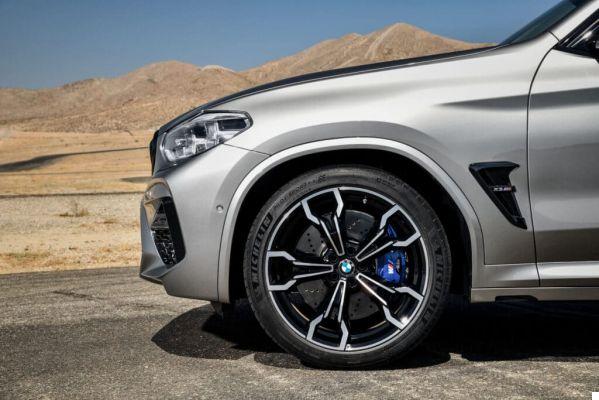
The tires always have similar "bars", between 40 and 60. The “bar 40” tires have a very thin and rigid shoulder, perfect for sporty driving. A low shoulder, in fact, does not allow the rubber to flex much, keeping the tread always in contact with the road. The cons of this solution, however, is the poor ability of the tires to absorb holes and roughness. In fact, the higher the shoulder, the greater its ability to offer comfort on disconnections. Because of this, cars with very large tires and rims and thin shoulders are more stable but less comfortable, while mounting higher tires sacrifices some grip and aesthetics in the name of comfort.
The diameter of the circles to "be cool" with friends, but not only
We then come to the second "group" of figures, R16. Let's get it out of the way right away R: means Radial, and indicates the construction of the rubber. In fact, once the tires were of the radial type, indicated by the R, or diagonal, with the crossed plies, indicated by the letters B or by a dash, -. Today, however, the tires are almost all Radial, and the most common letter is the R, or ZR. The latter is located on the high performance tires, capable of exceeding 240 km / h.
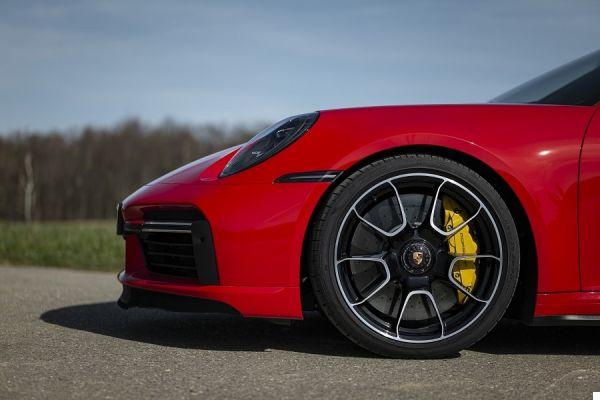
But we come to the number 16, the first you learn to recognize. This is in fact the number that indicates the circle diameter. Reading an R16 tire, therefore, means being in front of a tire equipped with 16-inch rims. The diameter of the rim is important both from an aesthetic and a functional point of view. Obviously, the greater the polliciaggio of a rim, the better its aesthetic result. This is because in the same wheel arch, the set of rim and tire must always have the same diameter, with minimal differences. We are not usually faced with cars that go from 13 rims to 20 others.
To maximize handling studies and production costs, in fact, the tires used on a car have the same total diameter, between rim and tire. This means that, if the diameter of the rim is increased, the shoulder must decrease. On my car, for example, with the 16-inch rims the shoulder is / 55, with the 17-inch rims it goes down to / 45 tires, to then arrive at the 18 "rims, equipped with" 40 shoulder ". This means that, aesthetically, the black of the rubber is replaced by the design of the rims, more beautiful and cared for.
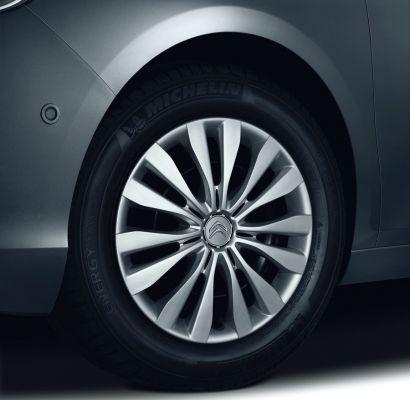
On the altar of comfort and driveability, as we have seen before, however, the comfort and absorption on the holes must be immolated. Often therefore you have to choose between a more beautiful and sporty car, or one that is more comfortable and more "modest" from an aesthetic point of view.
The codes of speed, load and the type of use
You didn't think reading tires could give you so much information, did you? And we still lack some "data", such as the next group of acronyms, 81V. In this case, we read two important data: the load and speed codes. These indicate, as it is quite immediate to guess, the maximum speed and the maximum load that each individual tire can bear.
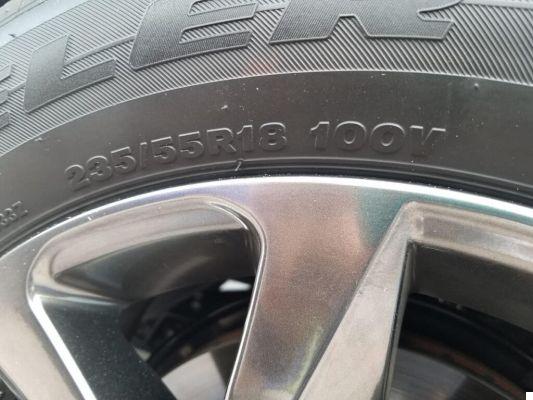
“81” indicates the load index, which is the maximum weight that each tire can bear. This figure does not only include the weight of the car, but also the weight of the car fully loaded with all passengers, luggage and a full tank of petrol, as well as the “weight” generated by aerodynamics on the sportiest cars. For this reason, people almost never “go to savings”. In fact, each number corresponds to a weight on a precise and univocal scale for the whole world.
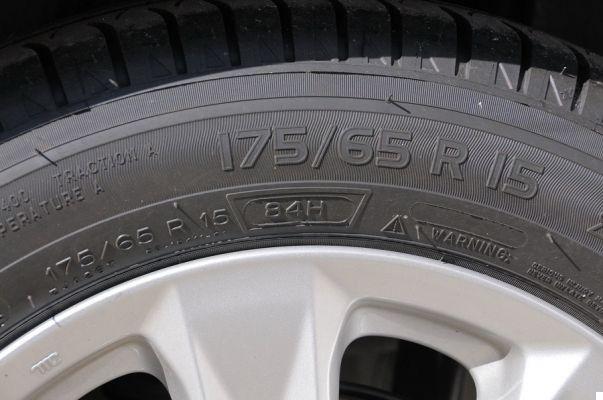
The number 81, in this case, represents a maximum weight per wheel of 462 kg. The car in question weighs 1215 kg in running order, while the maximum weight that the four wheels can bear is 1848 kg. It is therefore evident that manufacturers never risk reaching even close to the weight with all passengers and luggage, and the legislation also goes in this direction. In fact, the load index is indicated on the registration certificate, and it is possible to mount tires that have a value equal to or greater than the approved one. Security, as they say, is never too much.
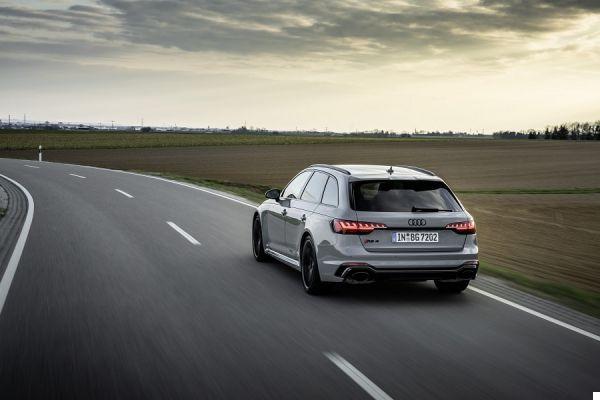
The letter V instead indicates the maximum speed the tires can safely reach. In this case, the letter V corresponds to 240 km / h, a speed of a few km / h lower than the maximum that can be reached by my car. This means that the tires mounted on my car allow me to safely reach the maximum speed, with even several km / h of "good".

In Italy, here too, the speed index is indicated on the booklet, and only tires with the same or higher code can be fitted. However, there is an exception: if you fit winter tires, you can "go over" and fit less performing tires, to save some money. The meaning of this rule is that, usually, in winter the speeds are lower, and for this reason the use of less performing tires is allowed. And before you think that "in Italy there is a limit of 130 km / h, I use slow tires sorry!", know that it is illegal to do this in the summer: you risk the withdrawal of the registration certificate and a very high fine.
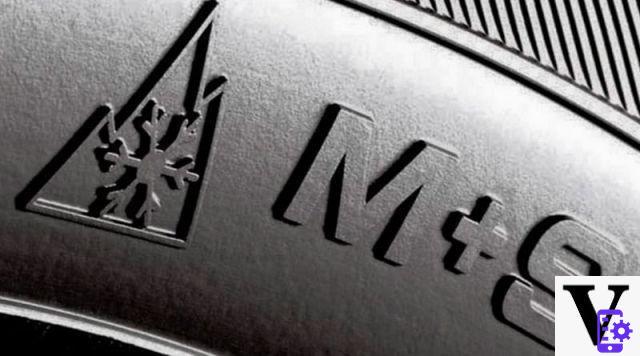
Finally, after this wording there is any indication of the “Seasonality” of a tire. If the tire is in fact summer, like the one in question, no abbreviation appears. If, on the other hand, the tire is winter or four-season, after load and speed indices the wording M + S appears, and in addition, the symbol of a mountain and a snowflake. The only abbreviation M + S indicates the presence of all-season tires (M + S actually means Mud and Snow, mud and snow), while the presence of a three-pointed mountain with a snowflake inside is the international logo of the winter tires.
The DOT, the “date” of a tire
We have come to the end of our journey to learn how to read tires. Of all the abbreviations still present, including the serial number of the tire, an indication of where it is produced and other useful information, the most important is the so-called DOT.
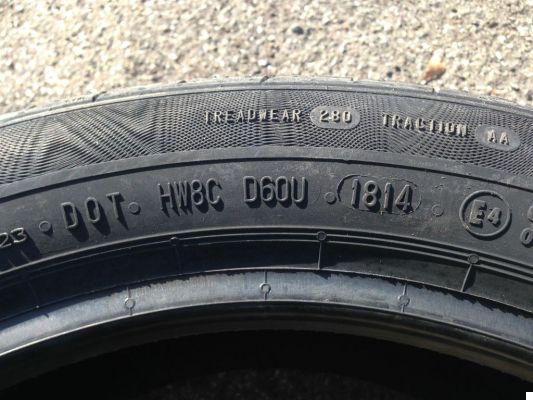
This "numerino" is inserted inside an oval, to make it recognizable from other numbers. And what does it represent? The date of manufacture of the tire. DOT means in fact Department of Transportation, and is a term introduced by the US Department of Road Safety, the NHTSA. This number consists of four digits, divided into two pairs of two: they indicate the week of the year and the year of production of the rubber. If the DOT 1520 appears on my tire, it means that it was produced in the fifteenth week of 2020, around mid-April.
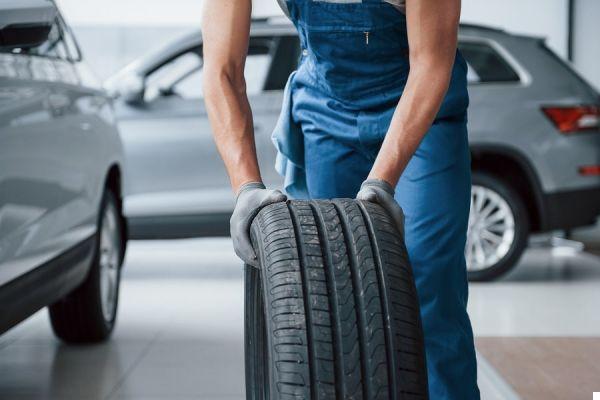
Why is it important to know the date? Because like food, tires also age. For example, when a simple piece of bread gets old, it hardens and no longer has the fragrance, taste and texture it used to be. And the same happens to the tires. Getting older, the compound with which each tire is made dries: cracks form, like "wrinkles" on the surface of the rubber. As it hardens, it no longer heats up as it should, and its degradation is drastically reduced. This means that old tires last longer by law, as they no longer wear out like normal tires, and the minimum tread depth of 1,6 mm is respected even for several years.

However, this is not a positive side: if the tire does not wear, it means that the layer of rubber that should wear out "sticking" to the asphalt remains on the tread. What does it mean? That the old tires "float" on the asphalt, instead of clinging to them: in the wet, an old tire is more dangerous than a smooth one but younger ... So beware of the DOT: even if by law it should not be checked, it is a good idea to never exceed 3, 4, maximum 5 years of life. Going further, the original properties of the tire are drastically reduced. Attention then during the purchase phase! Very few people check the DOT when they buy a set of tires, with the consequence of mounting tires on their car that are already 5 or 6 years old but never used. Reading your tires before fitting can help you prevent cheating.
Read the tires from the labels, such as appliances
We then learned to read tires from the shoulder. But since 1 November 2012 there is another component of tires to read: the label. For almost 9 years now, the European Union has made it mandatory to issue a label for each tire, similar in all respects to that of household appliances where energy class and the like are consulted. Obviously, a tire does not consume electricity, so you will not find the energy consumption. However, there are two categories where you get a grade divided into classes, and a numerical grade: consumption, grip in the wet and rolling noise.
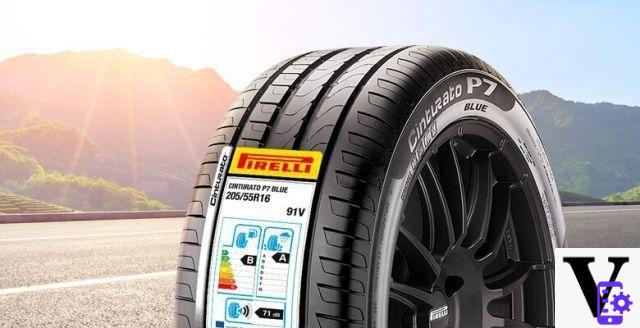
For the first two categories, consumption and wet grip, the recorded parameters are issued to the consumer in the form of a vote from A to F, with the A which, as in American schools, stands for excellent, and the F for bad. Consumption is recognized by rolling resistance, and tires with low rolling resistance are rewarded, while for wet grip, the assessment is carried out by braking a car on a wet surface. Finally, it is very easy to guess the noise measurement: it represents in fact the noise produced by the tire while driving that is perceived outside the vehicle.
Ready to work at your tire dealer?
You are now ready to fly with your wings. Reading tires is useful both for surprising your friends with newly acquired nerdy skills, and for understanding the characteristics of the tires of the cars around you. Above all, however, reading tires is essential to be aware of how tires are made and to know the details.
Too often, their importance is forgotten. Tires are the most important component of a car, without which it would not even be possible to live in our beloved cars. Knowing how to read, understand, analyze and choose carefully is therefore a fundamental aspect of a motorist's life, and I hope all those weird acronyms on the tread of your car now make a lot more sense. For today the episode of Auto for Dummies ends here. We see you next week with a new topic. Will it be back on the tires? Will it be about something totally different? To find out, all you have to do is come back here on technologicfans next Friday. Hi!
Discount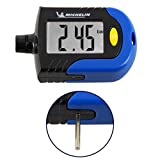 MICHELIN 9526 PRESSURE VERIFIER + F, AUTOMOBILE
MICHELIN 9526 PRESSURE VERIFIER + F, AUTOMOBILE
- Tire pressure and wear monitor
- Bar measurement - digital screen
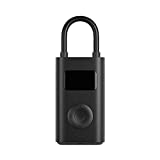 Xiaomi Portable Air Pump, Portable Digital Compressor with ...
Xiaomi Portable Air Pump, Portable Digital Compressor with ...
- Xiaomi Mi Portable Electric Air Compressor
- Portable Air Compressor with rechargeable battery, small size, convenient to carry.
- Air compressor to inflate wheels (bikes, cars, motorcycles) or balls, mats and more.
 Slime CRK0305-IN Pneumatic Puncture, Repair ...
Slime CRK0305-IN Pneumatic Puncture, Repair ...
- Complete emergency kit to repair tires: compressor, 473ml sealant (refills available), accessories ...
- It takes 15 minutes and four simple steps to repair and fully inflate your tires. You don't need jacks and ...
- It plugs into a 12V car cigarette lighter socket and features a dial to monitor the pressure of the ...




















![[Review] Samsung Powerbot VR7000: the robot vacuum cleaner from Star Wars](/images/posts/6bc44de38605b5c0fa12661febb1f8af-0.jpg)





